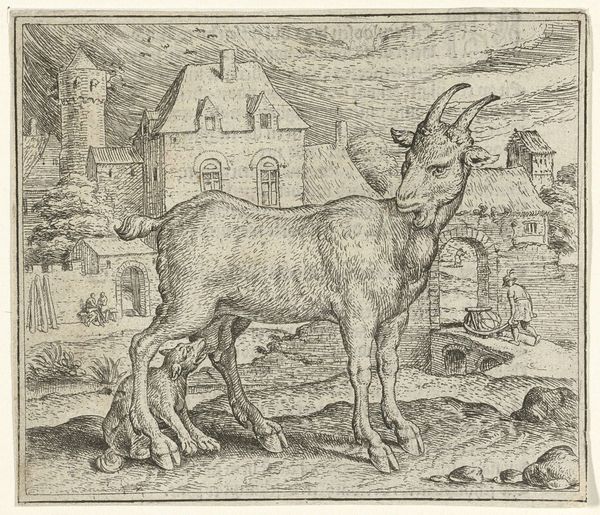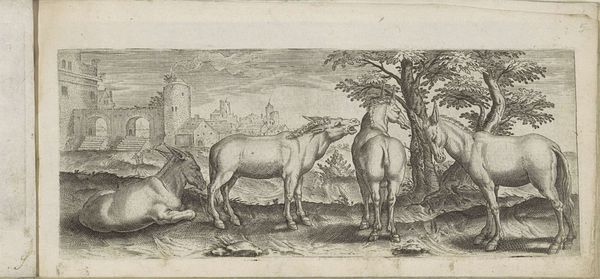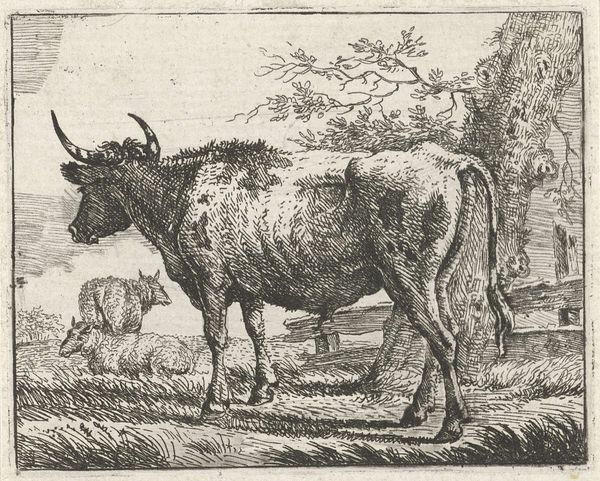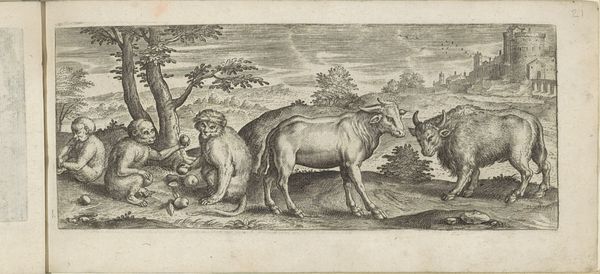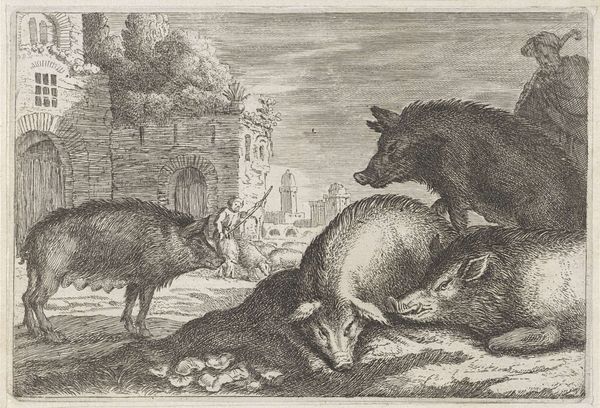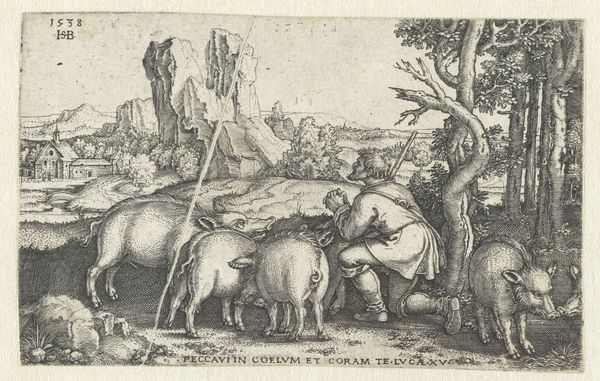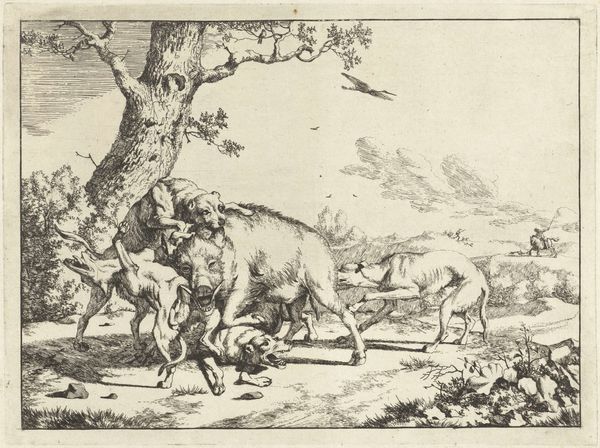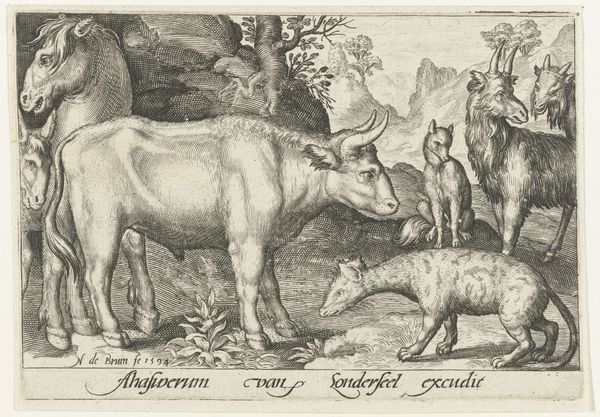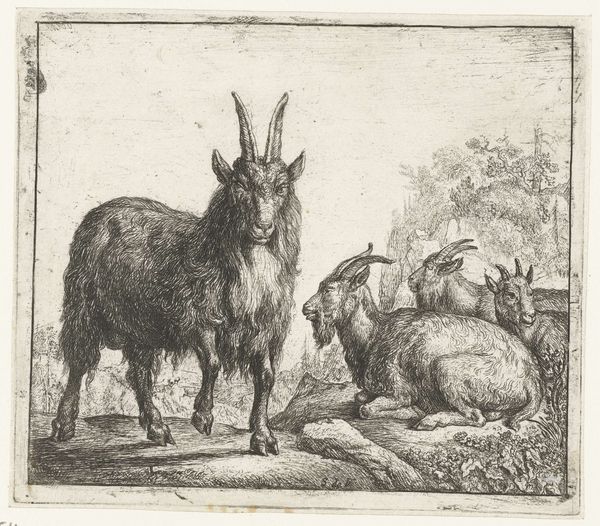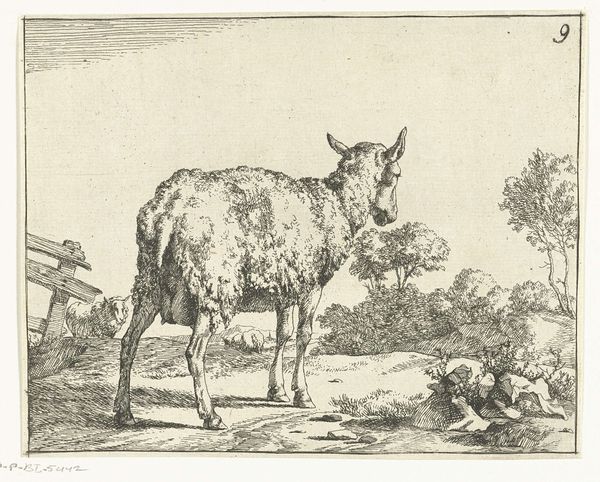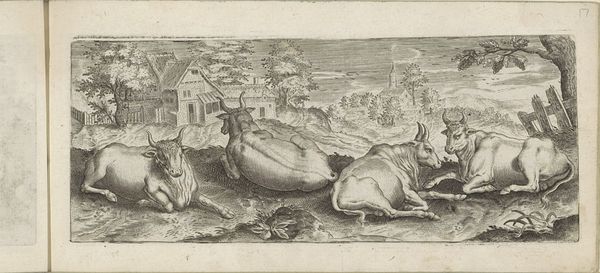
drawing, ink, engraving
#
drawing
#
allegory
#
pen drawing
#
landscape
#
figuration
#
ink
#
northern-renaissance
#
engraving
Dimensions: height 92 mm, width 112 mm
Copyright: Rijks Museum: Open Domain
Marcus Gheeraerts made this print, “Fable of the Wild Boar and the Donkey”, using an engraving technique. This painstaking process involves cutting lines into a metal plate with a tool called a burin. Ink is then applied to the plate, and the surface is wiped clean, leaving ink only in the incised lines. Finally, paper is pressed against the plate to create the print. Look closely and you can almost feel the textures: the bristly hair of the boar, the smooth coat of the donkey, and the rough stones of the landscape. The technique allows for incredible detail, which is a key part of the print’s appeal. Prints like this were not only art objects; they were also a means of circulating ideas and stories. The fable depicted here, with its moral lesson, would have resonated with a wide audience. Engravings were a key part of the rise of visual culture, making art accessible to a growing public and blurring the lines between craft, illustration, and fine art.
Comments
No comments
Be the first to comment and join the conversation on the ultimate creative platform.
